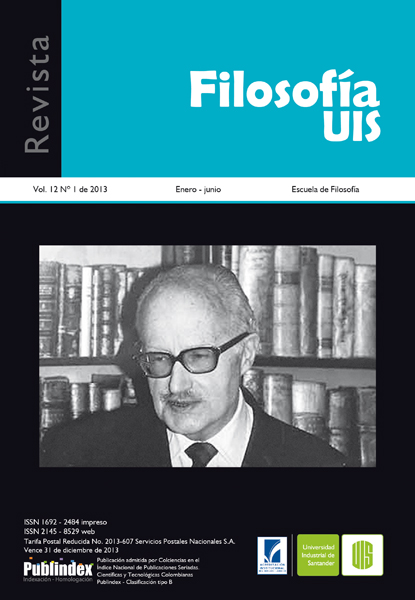Published 2013-09-13
Keywords
- avant-garde,
- expressionism,
- National-socialism,
- degenerate art,
- politics
How to Cite
Copyright (c) 2013 Miguel Salmerón Infante

This work is licensed under a Creative Commons Attribution 4.0 International License.
Abstract
This article begins with a description of expressionist aesthetics by means of a comparison of its principles with the ones of academical art and the ones of the fauves. This description is a prelude to the examination and the reception of expressionist art by the national-socialist ideology. This reception process gets its highest point with the exhibition “Degenerate Art”.
As a result of this exhibition it might be thought that the expressionist art was always an anti-Nazi one, and therefore, an antimilitarist and anti-imperialist one. It could also be thought that the National-socialism was an enemy of expressionist art. Both of these statements can be considered the truth only in part. The group of expressionist avant-garde felt in many occasions as heirs of the Gothic tradition and wardens of the German essence. Meanwhile, National-socialist factions were supporters of expressionism as a national art. The exhibition designed the position of the regime about modern art and the end of an ideological polemic in national-socialism.
Downloads
References
- Argan, G. (1991). El arte moderno. Madrid: Akal.
- Bussmann, G., Joachimides, C. M., Rosenthal, N., Schmied, W. (comps./ eds.) (1986). “Entartete Kunst-Blick auf einen nützlichen Mythos”. Deutsche Kunst im 20. Jahrhundert. Malerei und Plastik. Colonia: Prestel.
- Grosshans, H. (1983). Hitler and the artists. Nueva York, Londres: Holmes & Meier.
- Kyong Mi-Kim, M. A. (2006). Die Religiosen Gemälde von Emil Nolde, InauguralDissertation zur Erlangung des Doktorwürde des Ruprecht-Karls-Universität. Heidelberg: Ruprecht-Karl-Universität.
- Lafuente Ferrari, E. (1974, nov.-dic.). “Una introducción al expresionismo”. Emil Nolde. Catálogo de la exposición (Madrid, Salones de la Dirección General del Patrimonio Artístico y Cultural). Madrid: Comisaría Nacional de Museos y Exposiciones.
- Mosse, G., L. Barron. S. (ed.) (1991). “Beauty without Sensuality”. Degenerate Art, The Fate of the Avant-Garde in Nazi Germany. Catálogo de la exposición. Los Angeles, Nueva York: Los Angeles Museum of Art, Harry N. Abrams Publishers.
- Nolde, E., Chipp, Herschell B (comp./ed.)(1995). “Jahre der Kämpfe II”. Teorías del arte contemporáneo. Madrid: Akal.
- Paret, P. (2001). German Encounters with Modernism 1840-1945. Cambridge: Cambridge University Press.
- Reuther, M. (1997, oct. 3-dic. 28). “La pintura de Emil Nolde y sus cuadros religiosos”. Emil Nolde. Naturaleza y religión. Catálogo de la exposición. Madrid: Fundación Juan March.
- Richard, L. (1979). Del expresionismo al nazismo. Arte y cultura desde Guillermo II hasta la República de Weimar. Barcelona: Gustavo Gili.
- Spotts, F. (2011). Hitler y el poder de la estética. Boadilla del Monte: Antonio Machado, Fundación Scherzo.
